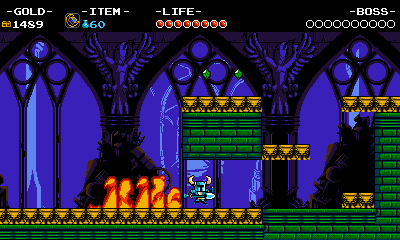In the original Shovel Knight, players navigate through a series of intricately designed levels accessed via an overworld map, with each stage presenting its own unique mechanics, themes, and challenges. The structure of these levels is reminiscent of classic platformers, providing a nostalgic yet fresh experience for players.
Level Overview
1. Plains of Passage:
– This is the introductory stage where players first encounter the core gameplay elements. It effectively lays the groundwork for what’s to come, featuring fundamental mechanics such as enemy encounters, platforming challenges, and the iconic pogo jump mechanic that defines Shovel Knight. The level includes a mix of both mobile and stationary obstacles, allowing players to familiarize themselves with controls and game dynamics.
2. Themed Stages:
– As players progress, they are introduced to various themed levels, each incorporating distinct mechanics and challenges. Examples include:
– Ice levels featuring slippery surfaces that affect movement and platforming precision.
– Windy stages introducing gusts that can propel players in various directions, adding an additional layer of complexity.
– Autoscrolling sections that require precise timing to navigate through continuously moving environments.
– Stages with floating platforms that require careful timing to traverse safely, as well as enemy patterns that gradually increase in difficulty, keeping players engaged and challenged.
3. Tower of Fate:
– Serving as the climactic final area, the Tower of Fate is structured as a multi-stage challenge that amalgamates elements from all previous levels, but at significantly higher difficulty. Here, players must utilize everything they’ve learned, facing tougher enemies and more intricate environmental obstacles designed to test their mastery of the game’s mechanics.
Level Structure
The game features an intentional design philosophy, with each level comprising approximately 26 regular rooms and several secret optional rooms (around 6). This structured approach draws inspiration from classic titles like Mega Man, ensuring a consistent gameplay length and pacing that keeps players invested in their progress through the game.
Expansions and Spin-offs
In addition to the main game, Shovel Knight has spawned expansions, such as Specter of Torment and Plague of Shadows, which introduce alternative level designs. These spin-offs occasionally allow players the liberty to choose the order of the stages, offering varying degrees of challenge, which adds further replayability to the Shovel Knight experience.
Conclusion
In summary, the levels in Shovel Knight provide a thoughtfully crafted journey that escalates in complexity, culminating in a formidable final challenge at the Tower of Fate. The blend of thematic design, gameplay mechanics, and structured level progression not only pays homage to classic gaming but also ensures that new players can enjoy a fulfilling platforming adventure.
/f/93161/1920x1080/a57f03bee3/sepia_2.png)



Leave a Reply